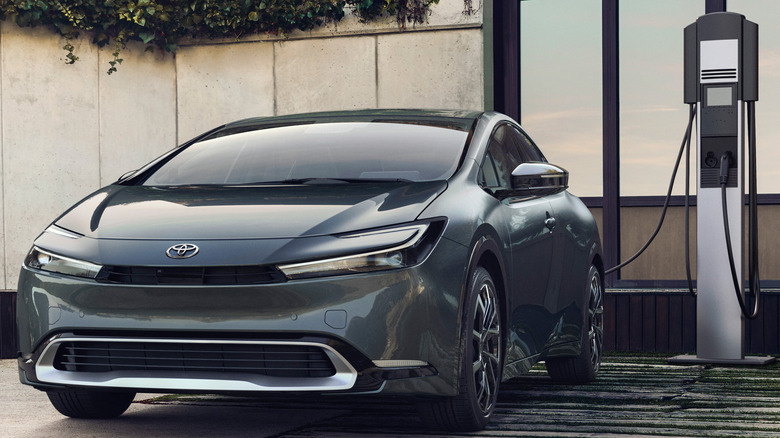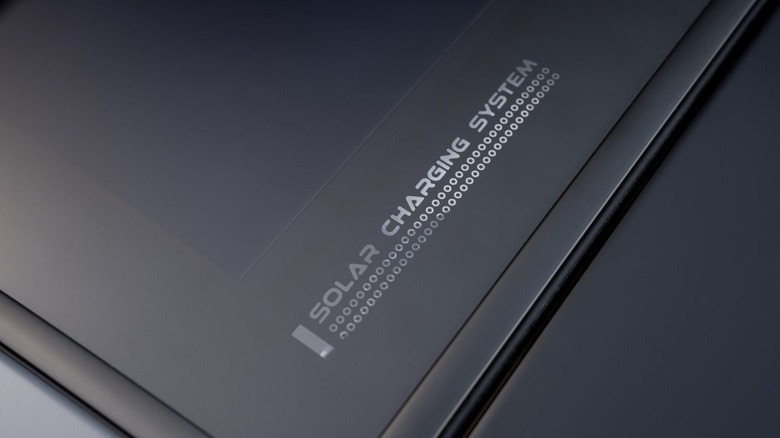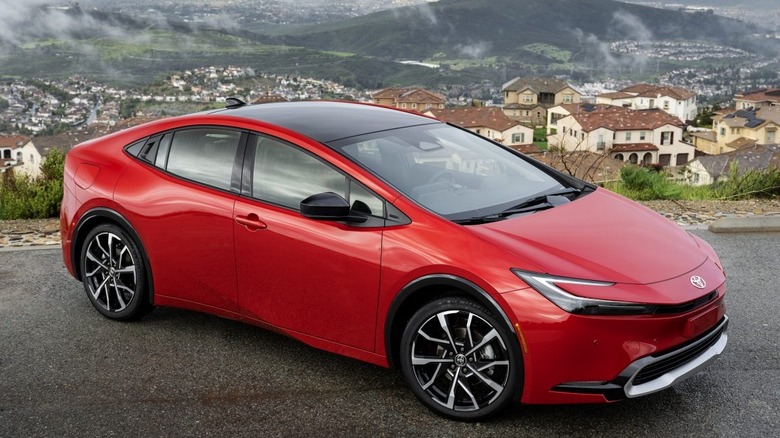Is The Prius Prime's Solar Roof Worth The Extra Cost?
Toyota has made hybrid cars more exciting with its 2023 Prius Prime. It's a giant leap forward over the outgoing Prius Prime in style, performance, and all-electric driving range. In addition, Toyota gave it a more robust 13.6 kWh battery, unlocking 44 miles of all-electric range in the base SE trim. Meanwhile, the XSE and XSE Premium trims deliver 39 miles of zero-emissions driving.
Under the hood is a 150-horsepower 2.0-liter four-banger, and two electric motors, that hike the output to a combined 220 horsepower and 136 pound-feet of torque. It may not sound like much, but the Prius Prime scoots to 60 mph from a dead stop in 6.6 seconds — four seconds faster than the outgoing Prius Prime. Of course, the updated powertrain has made driving more fun compared to its predecessor, but the Prius Prime has a unique feature that could give it even more miles without plugging in.
Is the Prius Prime's solar roof option worth it?
The 2023 Toyota Prius Prime is available in three trim models: SE ($33,445), XSE ($36,695), and XSE Premium ($40,265). An optional feature for the range-topping Prius Prime XSE Premium is Toyota's solar roof option: a $610 upgrade that replaces the standard glass roof with solar panels that could trickle-charge the batteries. Toyota adds that the solar roof could power the air-conditioning and other electrical accessories while driving. Moreover, you could get the solar roof as part of a costlier package that adds heated rear seats and a digital rearview mirror.
However, is the solar roof worth the extra cash? It depends on many factors, like where you live, weather conditions, or if you have an open or covered garage, etc. Anything that adds range and efficiency to a plug-in hybrid car is a win-win, but don't expect the solar roof to redefine your expectations.
The proof is in the pudding
The folks at Motor Trend tested the Toyota Prius Prime's solar roof, and the system provided 915 Watt-hours — or four miles of range — after sun baking for about nine hours. Furthermore, if enough sunshine enables the solar panels to work at their 185-watt peak capacity, they could deliver an average of 2.2 kWh or 6.4 miles. The solar roof could theoretically fully charge the battery pack at this rate in about six days of continued sun exposure.
Considering an average cost of about $0.15 per kWh, you save $0.33 daily. Dividing the potential savings with the solar roof's $610 initial cost yields 1,848 days — or roughly five years to recoup the investment.
But then again, gaining more usable range after parking under the sun is a sterling feature, if quite limited. The solar roof may not be worth it if you're concerned about saving money initially. But if you're gunning for the top-of-the-line Prius Prime XSE Premium, the solar roof option may pay for itself in the long run.


